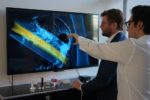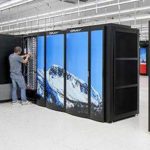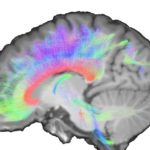PRACE, the Partnership for Advanced Computing in Europe, has issued an additional 10 awards of supercomputing resources, with a total of 227.6 million core hours for the European Union’s effort to combat COVID-19. This follows the first 10 awards recently announced by the organization. Here’s a summary of the latest PRACE awards….
Reducing the risk of blood clots by supercomputing turbulent flow
People with mechanical heart valves need blood thinners on a daily basis, because they have a higher risk of blood clots and stroke. With the help of the Piz Daint supercomputer, researchers at the University of Bern have identified the root cause of blood turbulence leading to clotting. Design optimization could greatly reduce the risk of clotting and enable these patients to live without life-long medication.
Piz Daint Supercomputer to Power LHC Computing Grid
The fastest supercomputer in Europe will soon join the WLHC Grid. Housed at CSCS in Switzerland, the Piz Daint supercomputer be used for data analysis from Large Hadron Collider (LHC) experiments. Until now, the ATLAS, CMS and LHCb particle detectors delivered their data to “Phoenix” system for analysis and comparison with the results of previous simulations.
An Update on Piz Daint – the Fastest Supercomputer in Europe
In this video from SC18 in Dallas, Michele De Lorenzi from CSCS in Switzerland provides an update on Piz Daint, the fastest supercomputer in Europe. “Recently upgraded with two additional cabinets full of NVIDIA V100 GPUs, the Cray XC50 system comes in at #5 in the world with 21.23 Petaflops of performance on the LINPACK benchmark.”
PASC18 Conference Grows in Attendance and Scope
Over at CSCS, Simone Ulmer writes that more than 400 scientists from all over the world met in Basel in early July for PASC18. With more than 200 talks centered around the conference theme of “Fast and Big Data, Fast and Big Computation” 400 attendees enjoyed the exchange of knowledge in the area of Scientific Computing and Computational Science.
Supercomputing how Fish Save Energy Swimming in Schools
Over at CSCS, Simone Ulmer writes that researchers at ETH Zurich have clarified the previously unresolved question of whether fish save energy by swimming together in schools. They achieved this by simulating the complex physics on the supercomputer ‘Piz Daint’ and combining detailed flow simulations with a reinforcement learning algorithm for the first time. “In their simulations, they have not examined every aspect involved in the efficient swimming behavior of fish. However, it is clear that the developed algorithms and physics learned can be transferred into autonomously swimming or flying robots.”
Scratch to Supercomputers: Bottoms-up Build of Large-scale Computational Lensing Software
Gilles Fourestey from EPFL gave this talk at the Swiss HPC Conference. “LENSTOOL is a gravitational lensing software that models mass distribution of galaxies and clusters. It is used to obtain sub-percent precision measurements of the total mass in galaxy clusters and constrain the dark matter self-interaction cross-section, a crucial ingredient to understanding its nature.”
Video: Piz Daint Supercomputer speeds PRACE simulations in Europe
In this video, the European PRACE HPC initiative describes how the Piz Daint supercomputer at CSCS in Switzerland provides world-class supercomputing power for research. “We are very pleased that Switzerland – one of our long-time partners in high-performance computing – is joining the European effort to develop supercomputers in Europe,” said Mariya Gabriel, Commissioner for Digital Economy and Society. “This will enhance Europe’s leadership in science and innovation, help grow the economy and build our industrial competitiveness.”
Searching for Human Brain Memory Molecules with the Piz Daint Supercomputer
Scientists at the University of Basel are using the Piz Daint supercomputer at CSCS to discover interrelationships in the human genome that might simplify the search for “memory molecules” and eventually lead to more effective medical treatment for people with diseases that are accompanied by memory disturbance. “Until now, searching for genes related to memory capacity has been comparable to seeking out the proverbial needle in a haystack.”
GPUs Power Near-global Climate Simulation at 1 km Resolution
A new peer-reviewed paper is reportedly causing a stir in the climatology community. “The best hope for reducing long-standing global climate model biases, is through increasing the resolution to the kilometer scale. Here we present results from an ultra-high resolution non-hydrostatic climate model for a near-global setup running on the full Piz Daint supercomputer on 4888 GPUs.”












